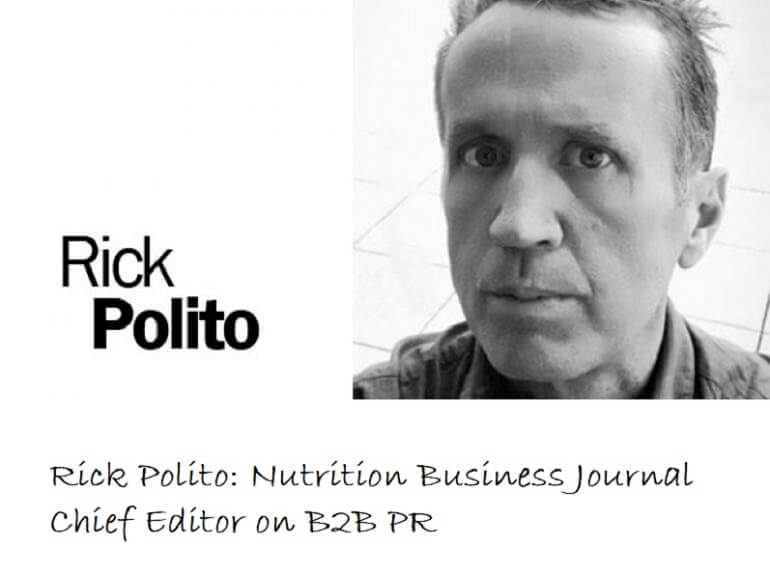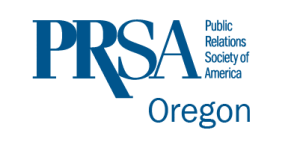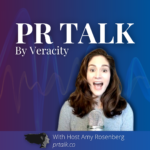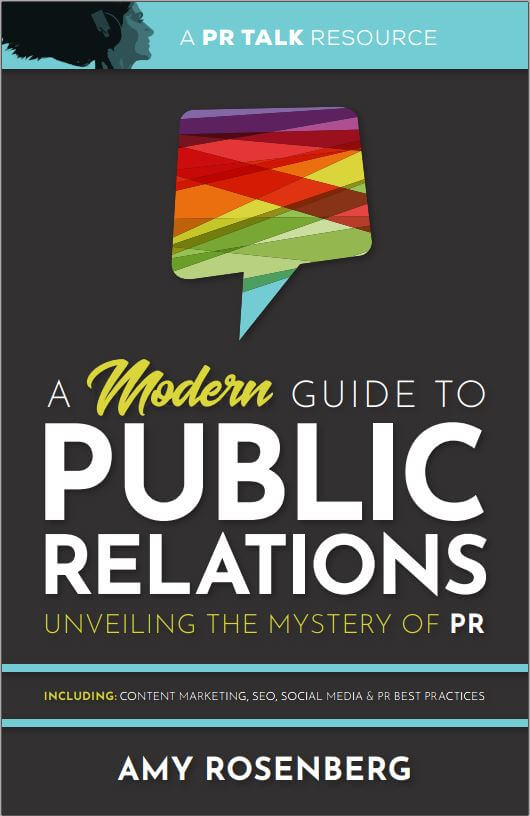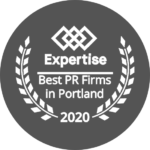Leaving the Fast-Paced Newspaper World for the Political Waters of Trade Journalism
Veracity works with a lot of businesses that work with other businesses. This category — which does not speak directly to the consumer — is called business-to-business or B2B for short. The strategy looks different when attempting to place businesses in front of other businesses instead of the everyday consumer.
Yet we haven’t interviewed many B2B press contacts on PR Talk, simply because of our geographic location. Many of them aren’t located in Portland and we find the energy created from interviewing our subjects in person to be optimal. But I decided to get over my fear of the phone and interview one of our long-distance friends, Rick Polito, Editor in Chief of Nutrition Business Journal (NBJ).
Before leaping over to the B2B side, Rick spent 21 years as a reporter, columnist and features writer at traditional media outlets like the Arizona Daily Star and California’s Pacific Sun. That’s why he’s the perfect interviewee to talk about the differences between B2B and consumer media work.
Piquing Interest in Stories
Even though he’s been working his way up the editorial chain at the NBJ after enduring a stint as a stay-at-home-dad before joining the publication, Rick distinguishes himself as a “reporter, not an editor.” In all the years I have worked with editors I have never heard one make this distinction before. This mindset allows him to bring a newspaper approach to the NBJ, which he classifies as “confrontational with some edge,” leading him into his first PR tip. “It’s not a good story if you’re not interested in it.” Familiar advice that can be found in both consumer and B2B circles.
An example of how you can “get excited and find different ways of telling the story,” is a recent road trip he took on his way to Expo East in which he stopped to tour different farms along the way for an in-depth article uncovering the upcoming farm bill called The Road to Natural: Back to the Farm, which ran in September’s issue of the NBJ. He embarked on “1,800 miles of driving and 10,000 words of writing in four days.”
Embracing the Dark Side
There are many politics at play in small niche B2B industries and just being a member of the press doesn’t mean you don’t have to play by the rules. Yet Rick “takes off his cheerleader outfit” from time to time in his role at the NBJ, operating like the old-school newspaper journalist he once was.
He took a major risk by launching the “Dark Issue” on behalf of the NBJ. The Dark Issue uncovers what’s been going wrong in the nutritional and supplemental industries. While this does not sound like the kind of placement a PR person wants to land for their client, Rick says that it’s a conversation that must be had and it’s better to have it within industry channels rather than across the front pages of the New York Times again. He reminds us that one major mistake can affect everyone’s reputation across the industry.
Rick was very wary of alienating the close-knit community when launching the Dark Side issue but he still gets pats on the back. All but two naysayers recognize that the Dark Side is helping the industry, rather than hurting it.
Stepping Away from Industry Politics
A major difference between the NBJ and other trade journals is they don’t take advertisements, offering freedom from keeping advertisers happy. If you actually believe there is a solid line between advertising and editorial — think again. While some publications might respect the difference between church and state better than others, many, especially in the B2B industry, do not. Rick points out that you’ll have a tough time finding a negative story about large advertisers like grocery store chains or car dealers in newspapers.
The NBJ makes its income off of a steep subscription price that provides issues chalk-full of data that can help subscribers map out their company’s next steps. According to Rick the data uncovers “who is selling what and where they are selling it.”
Getting Coverage in the NBJ
While we do need to actually think before contacting the NBJ, Rick assures me that they want to hear from PR people! Here are the top four ways you can make a connection with the publication without having to drive 1,800 miles and walk the farmland.
- Provide Sources—They are always looking for experts and are in need of “sources just as much as ideas.” Examine the experts you have at your disposal and provide the NBJ with a roster detailing backgrounds and proposed subject matter. While the NBJ wants to hear about today’s ideas, they also want to know who they can access in the future.
- Tradeshow Meetings—A good place to catch Rick is at one of the many nutrition trade shows. Attempt to get on his calendar three weeks before the show. If you have a source to put in front of him, even better. He rattled off some of the shows he attends:
- Natural Products Expo West
- Natural Products Expo East
- Council for Responsible Nutrition’s Annual Symposium
- GOED Exchange 2018
- NBJ Summit
- Supply Side West
- Editorial Calendar—Time and theme pitches according to their editorial calendar, which is currently being compiled for 2018. Upcoming issues include: sports nutrition, a first-time millennial issue, and B2B supply chain trust. What could your company bring to the table in relation to topics listed in the NBJ calendar?
- Respectfully Nudge — Rick mentioned a few times that we shouldn’t be afraid to nudge him, saying they work about six weeks ahead, so if you send your information too early you’ll need to nudge him again around the six-week mark. Nudging him wouldn’t be spammy if you truly have a fit.
The best contacts for PR people at the NBJ are Rick himself and senior editor, Bill Giebler.
Differences Between Consumer and B2B Press
Rick admits to facing a much higher learning curve when jumping over to the B2B side. The “longer view” approach to B2B reporting — which tends to focus more on commentary, bypassing the daily grind — was unique to Rick. He’s also been surprised by the politics that the small industry community brings to the work.
When asked what PR should know about the differences between working with each type of medium, Rick says that promoting our staff expertise matters more to him now. “We want to get more voices into the stories. It’s sometimes harder to find the expert than the ideas,” he says. Homework is key in the B2B arena too. Just like in the consumer arena, researching before pitching is imperative.
And finally Rick leaves us with a good old-fashioned piece of advice that you’ll understand if you’ve been around for awhile:
“Flattery gets you everywhere with a reporter.”
About the guest: Rick Polito
As Nutrition Business Journal‘s editor-in-chief, Rick Polito writes about the trends, deals and developments in the natural nutrition industry, looking for the little companies coming up and the big money coming in. An award-winning journalist, Polito knows that facts and figures never give the complete context and that the story of this industry has always been about people.
Connect and follow Rick on social media:
This episode of PR Talk is brought to you by PRSA Oregon
Throughout Oregon and Southwest Washington, PRSA provides members with networking, mentorship, skill building and professional development opportunities – whether you are a new professional fresh out of college or a skilled expert with 20 years in the industry. Check out PRSAoregon.org for more information on how membership can help you grow and connect.
PR Talk is sponsored by dapulse
In such a fast-paced, multi-faceted work environment, it can be tough to stay on top of everything. dapulse is the collaboration tool trusted by businesses of all kinds to help cut down the clutter and streamline productivity. Learn more at dapulse.com and signup for a free trial. You’ll see in no time why so many teams around the world are choosing dapulse for their project management needs.
PR Talk listeners can use the coupon code BetterExecute for a 15% discount.

